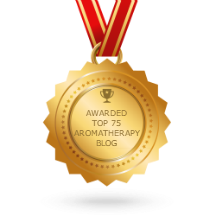A Lot About Linalool
Guest blog by Gail Storment
What is linalool?
I have seen Linalool percentages listed in GC/MS reports, discussed under the
headings of functional families, and listed as a constituent in an essential
oil many times. I wanted to know more so
I started searching in my stack of essential oil books, online, asking
questions, you name it…I wanted to learn about linalool!
Linalool is
a monoterpenol alcohol, with the molecular formula C10H18O, and a molecular weight of 154. That
sounds really geeky, sophisticated and scholarly! But where does Linalool come
from? Linalool is found in the Lauraceae, Rutaceae and Apiaceae plant families:
·
Ho Wood (how
about 98% linalool!)
·
Rosewood
·
Lavender
·
Coriander
(Apiaceae family)
Linalool is
also found in plants from the Rutaceae family:
·
Bergamot
Pink Grapefruit
·
Petitgrain
Linalool can
be anti-bacterial, anti-infective, anti-spasmodic, sedative, and relaxing, plus
can aid in pain reduction. Linalool also is important for the production of
vitamin E in our bodies.
Recently I read
about linalool being anti-inflammatory and that stunned me. I have never read anything
about the anti-inflammatory properties of linalool so I decided to learn more
about this particular therapeutic benefit, verify if the information was true
or just wishful thinking, whatever-I just had to know the facts.
I read the
cited studies so I will share what I gathered from them so we can learn about
the possible anti-inflammatory benefits of essential oils that contain linalool.
A particular study from China is the one what about knocked my socks
off-cigarette smoke and linalool!
Once upon a
time some lab mice needed something interesting to change their routine so some
brainy scientists decided to dose up these mice with Linalool by
intraperitoneal injection (i.p.) two hours prior to exposing them to cigarette
smoke. They continued this schedule for five consecutive days. The experiment
was done to determine if Linalool would protect the mice’s lungs from acute
inflammation from the cigarette smoke. After giving the mice the linalool injections,
they measured the numbers of macrophages and neutrophils in “BALF”
(bronchoalveolar lavage fluid). What big words these studies use and how it
messes with my story big time! So a simple conclusion- it was revealed that
Linalool protected the mice against cigarette smoke induced lung inflammation. See
the link below for the full content of the study.
Now I will
add to my inflammation discovery another study that included linalyl acetate
along with linalool. Many of the essential oils that contain linalool also
contain linalyl acetate so the anti-inflammatory actions of both constitutes
were tested individually.
Entering
this story are creatures with long tails but this time rats were used in the
experiment rather than little mice. The rats had a different ailment cast upon
them-carrageenin-induced edema as the inflammation! After systematic doses of
both constituents (individually tested), less edema was determined. The
linalool administered rats showed a more prolonged effect of reduced edema while
the linalyl acetate showed a reduction of edema for only one hour after the
carrageenin was given.
Check out
this link for the full story of this experiment on linalool and linalyl
acetate.
After years
of using essential oils with high concentrations of linalool and linalyl
acetate for the therapeutic benefits we learned about long ago, we now need to
consider another reason to include them in a blend. Introducing an important
therapeutic benefit-anti-inflammatory…take your bow! These studies show that
linalool and linalyl acetate were important indications of anti-inflammatory
activity in the lungs from essential oils that contained these constituents. Now
we can consider making blends for lung inflammation using Lavender, Ho Wood and
other essential oils that are high in linalool and linalyl acetate.
I have a new
inhaler blend to use respiratory issues and it includes two *new oils for lung
inflammation.
Respiratory Inhaler Blend for Congestion and Lung
Inflammation
3 drops Ravintsara - anti-infectious, expectorant,
decongestant, anti-bacterial, antimicrobial, anti-tussive, mucolytic
2 drops Eucalyptus Dives – mucolytic, expectorant,
anti-tussive
2 drops Laurel Leaf - decongestant, anti-viral,
anti-bacterial, analgesic, sneezing and allergy symptoms.
*3 drops Lavender - Lavandula angustifolia (approximate
percentages of linalyl acetate 42%, linalool 45%), analgesic, anti-bacterial, anti-fungal,
anti-inflammatory, anti-microbial, sedative
*3 drops Clary sage – (linalyl acetate approximately 65%)
Anti-inflammatory, anti-spasmodic, calming, sedative to help sleep while
fighting respiratory issues
Submitted
by Gail Storment, a self-studying student of aromatherapy(Just a note to thank our friend Gail for sharing the results of her hard work with us all!)



1 comment:
Wonderful. Thanks Gail!
Post a Comment